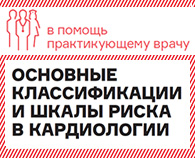'Death Talk' Difficult on Both Ends of Stethoscope
Talking to patients and families about end-of-life planning is never easy, but approaching the conversation with some basic ground rules may ease the tension, Canadian researchers report.
Identifying at-risk patients is the first task, but one that should be quickly followed by a frank discussion with those patients and their families, wrote John J. You, MD, MSc, of McMaster University, Hamilton, Ontario, and colleagues in an article published online by CMAJ.
Based on a review of some 60 published papers, the authors devised an algorithm for discussing end-of-life decisions, and they suggest starting with a simple self-examination by asking "Would I be surprised if this patient died within the next year?" That question is an easy and quick screening tool to identify patients who may warrant a more in-depth discussion on goals of care, they wrote.
Once a patient is identified, the clinician needs to assess that patient's readiness for such a sensitive conversation, they and determine whether he or she has engaged in similar discussions with other clinicians.
Information exchange and decision-making should come next, using these key discussion points to guide the conversation:
• Discuss the risks and expected outcomes of various treatment options for the current illness
• Clearly communicate the patient's prognosis (which may include a prediction of life expectancy) based on objective criteria
• Elicit the patient's wishes, perceptions, and values
• Identify and involve substitute-decision makers (e.g. close family members)
• Reach a decision through discussion and deliberation
• Clearly document the patient's wishes in the medical record, using specific examples and if possible the patient's own words.
Goal setting is as important at end-of-life as at any other time, and to this end, the collaboration among patient, family and clinician is essential, the authors wrote.
A key example to consider is the use of CPR, cardiopulmonary resuscitation.
Overall in-hospital survival after CPR is about 10-15%, the authors report, and among the sickest patients (such as those in the ICU), survival is only 1 to 5%.
Undergoing CPR is often the "default" decision for most patients, yet its indiscriminate use may lead to prolonged suffering, increased disability and diminished quality of life, all without any further ability to reverse the underlying cause of illness.
Joel Zivot, MD, medical director of the cardiothoracic intensive care unit at Emory University Hospital in Atlanta, advocates for transparency and honesty in all discussions related to goals of care.
"I reveal how the game is played to patients," Zivot says. He explains that everyone involved in these end-of-life discussions, including the physicians, have their own personal beliefs and biases. Rarely is there a clear right answer. "When patients ask me, 'What would you do, doctor?', I tell them, 'It doesn't matter what I would do. What would you do? Let's figure it out together.'"
The American College of Critical Care Medicine (ACCM) supports this process of shared decision-making and also underscores the importance of caring for both the patient and the family.
There is, however, no Likert scale to use in this joint decision-making because, as stated in the ACCM 2008 consensus statement, "recommendations are based on ethical and legal principles that are not derived from empirically based evidence."
Finally, You and colleagues note that there is abundant research to support the value of end-of-life planning, but they caution that it may not be feasible to address all the topics during a single encounter.
Instead, they recommend that clinicians use judgment and flexibility in engaging patients and family members in a series of discussions.
Source: www.medpagetoday.com






